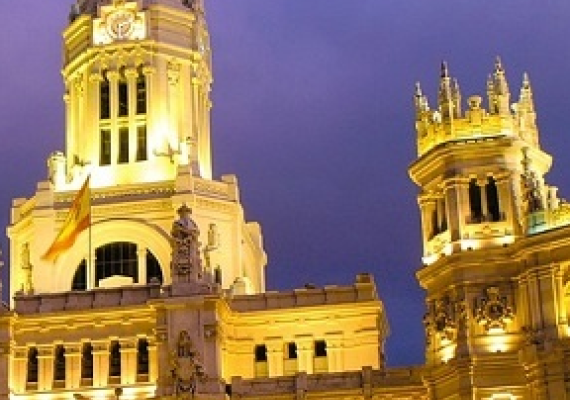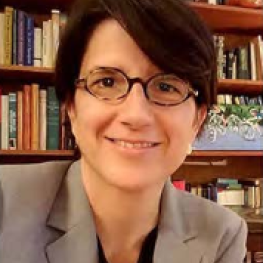The First Modern Syllabus: A. S. Yahuda at the University of Madrid

Abraham S. Yahuda (1877–1951) was the first Jewish scholar to hold a chair in Jewish studies at a modern Western university—the University of Madrid. Presented below is my translation of Yahuda’s first course at the university, taught in 1915–1916. Composed for Spanish-speaking students, Yahuda’s syllabus offers a glimpse into his teaching and conception of postbiblical Hebrew as well as its construction in Spain during this period. The syllabus traces the diverse history of postbiblical Hebrew, including its many influences (e.g., Aramaic, Greek, Persian, etc.), while also documenting recent discoveries that were shaping the field, such as the unparalleled collection of medieval Jewish manuscripts found in 1896 in the Cairo Geniza (see “Josue Ben Sira,” below).
The syllabus is divided into two main sections covering rabbinic as well as postbiblical Hebrew more broadly: “Rabbinic Language” and “Rabbinic Literature.” Each section provides historical background while paying significant attention to its development in medieval Spain under both Islamic and Christian rule. While outlining the flourishing of “Spanish Hebraic” poetry and prose in the Iberian Peninsula, Yahuda Hebraicizes many of the names, including Jewish writers from Arabic-speaking al-Andalus—as with the eleventh-century writer “Bahia Ben Pakuda,” with whom Yahuda employs the Hebrew noun “ben” (son) instead of the more commonly used Arabic word “ibn.”
Crucially, this text serves as the first known syllabus preserved by a modern professorial chair in Jewish studies. Neither of Yahuda’s nearest peers, Harry Wolfson at Harvard University and Salo W. Baron at Columbia University, seem to have safeguarded their original syllabi. A copy of this syllabus in Spanish may be found in file 1652, Abraham S. Yahuda Archive, National Library of Israel.
For much more on Yahuda, see the article by Gonzalez and the full forum devoted to him, both in JQR 109.3.
Syllabus [Programa] for Rabbinic Language and Literature
1915 to 1916 course
Rabbinic Language. First part.
I. Character and development of rabbinic language.
II. Grammar.
THEMES
I. The place that rabbinic language occupies in the big family of Semitic languages.
II. Its relation to the classical biblical language.
III. Classical period of biblical Hebrew: its decadence and transition to the rabbinic
IV. Foreign [extrañas] influences:
(1) Aramaic-Chaldean elements;
(2) id. Greek elements;
(3) id. Latin elements;
(4) id. Persian elements.
V. The language of the Mishnah and its literature.
VI. The language of the Talmud and its literature.
VII. The language and literature of the Midrashim [Midrasim].
VIII. Language of the Targumin and its literature.
IX. The language of the ancient synagogal literature, (Tefilot and Piyutim).
X. The language of the literature in the Gaonic period [del Gaonato].
Second part.
I. The renaissance of Hebraic language in Spain.
II. Language of Spanish Hebraic [hispano-hebraica] poetry and prose.
III. Influence of the Arabic language during Muslim domination [la dominación musulmana].
IV. Vestiges of the influence of the Spanish language on Spanish Rabbinic [hispano-rabínica] literature from the end of Muslim domination until the expulsion of the Jews from Spain.
V. Successive manifestations of this same influence on the Sephardim in the Orient [Oriente].
Third part. Grammar.
I. Grammatical analysis of rabbinic texts for studying verbs and their conjugations, especially in their difference from classical Hebrew.
II. Id. id. for the study of the noun and its forms especially in rabbinic language.
III. Id. id. for the study of the particles used in rabbinic (Hebrew) and unknown in classical Hebrew.
IV. Id. id. for the study of the characteristic phrases of rabbinic (Hebrew).
V. Id. id. for the metaphorical expressions, local uses, and idioms [Idiotismes, giros y modismos] in distinct literary periods.
RABBINIC LITERATURE
Introduction
I. The concept of Hebraic, Judaic, and Rabbinic literature.
II. The beginnings of Hebraic literature after the Bible.
III. Works only known from their Greek translations.
IV. The Hebrew original of the work from Josue Ben Sira recently discovered.
First unit [Capítulo]
I. The beginnings of rabbinic literature in the Orient.
II. The work of the Teachers [Maestros] of the Great Assembly: (The Soferim).
Second unit
III. The Haggadah and the Halakhah.
IV. The Teachers of the Mishnah (Tannaim).
V. The composition of the Mishnah and its orders.
VI. The Tosefta and the Baraita.
Third unit
VII. The Teachers of the Talmud (Amoraim).
VIII. The Bavli Talmud and the Jerusalem Talmud.
IX. The conclusion of the Talmud.
Fourth unit
X. The literature of the Haggadah and the Midrashim.
XI. The ethical Haggadah [La Hagada ética].
XII. The historical Haggadah.
XIII. The exegetical and homiletical Haggadah.
Fifth unit
XIV. Rabbinic literature in the Orient during the Gaonic period.
Second Part. First unit.
I. The flowering of rabbinic literature in Spain and the renaissance of Spanish Hebraic poetry.
II. The religious poetry and the profane poetry.
III. Isaac and Ben Gayat.
IV. Josef Ben Hisday.
Second unit
V. The Golden Age of Spanish Hebraic poetry.
VI. Samuel Hanagid ibn Agrela [Naghrillah], in Granada.
VII. Salomon Ben Gabirol, from Malaga.
VIII. Moises Ben Esra, from Granada.
IX. Juda Halevi, from Toledo.
X. Abraham Ben Esra.
XI. Isaac Ben Esra.
XII. Josef Ben Zebara.
XIII. Jehuda Al Harisi.
Third unit
XIV. Theology and Philosophy in the Orient and Spain.
XV. Translations of philosophical works.
XVI. The influence of Muslim theology and Arab philosophy.
XVII. The philosopher Saadia Al Fayumi.
XVIII. Philosophic works of Salomon Ben Gabirol.
XIX. The Ethics [La Ética] of Bahia Ben Pakuda.
XX. El Kusari by Jehuda Halevi.
XXI. The philosophic works of Maimonides.
XXII. Josef Ben Aknim.
XXIII. Josef Ben Zadik.
XXIV. Sem Tob Palaquera.
XXV. Josef Ben Kaspi.
XXVI. Yehuda Abarbanel.
Fourth unit
XXVII. Mysticism (Kabbalah).
XXVIII.The Book of Creation (Sefer Yesira).
XXIX. Todros Halevi Abulafia, from Toledo.
XXX. Bahia Ben Ascher, from Zaragoza.
XXXI. The great work of Judaic mysticism, “The Zohar.”
XXXII. Moises Ben Sem Tob De-Leon, from Guadalajara.
XXXIII. Abraham Ben Samuel Ben Abulafia, from Zaragoza.
Fifth unit
XXXIV. Philological studies in the Orient and Spain.
XXXV. Yehuda Ben Kuraish, from Tahart [Tiarat, Algeria].
XXXVI. The Schools of Dunash Ben Labrat, from Fez, and of Menahem Ben Zaruk, from Tortosa.
XXXVII.Yehuda Abu Zacaria, Ben Hayusch.
XXXVIII.Yona Abul Balid Meruam Ben Ganaj, from Zaragoza.
XXXIX. The philological works of Abraham Ben Esra.
XL. The grammatical and lexicographical works of the Kimhi family [los Kimhi]—Josef, Moises, and David.
XLI. Rofiat [Profiat] Duran Ha-Efodi, from Mallorca.
XLII. Decadence of Rabbinic Literature in Spain.
*The author thanks Thomas F. Glick and Christine Hayes for discussing this text with her.
